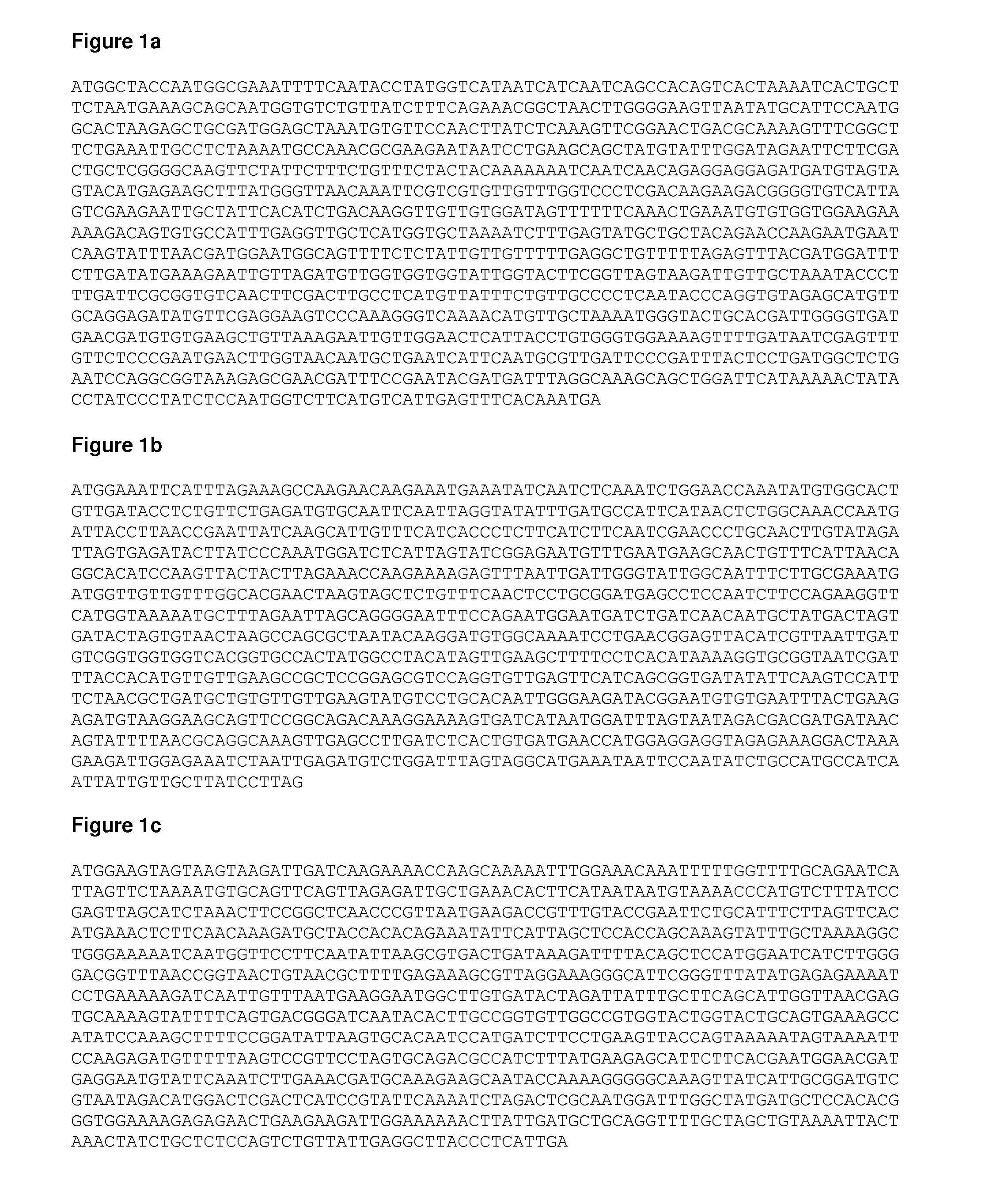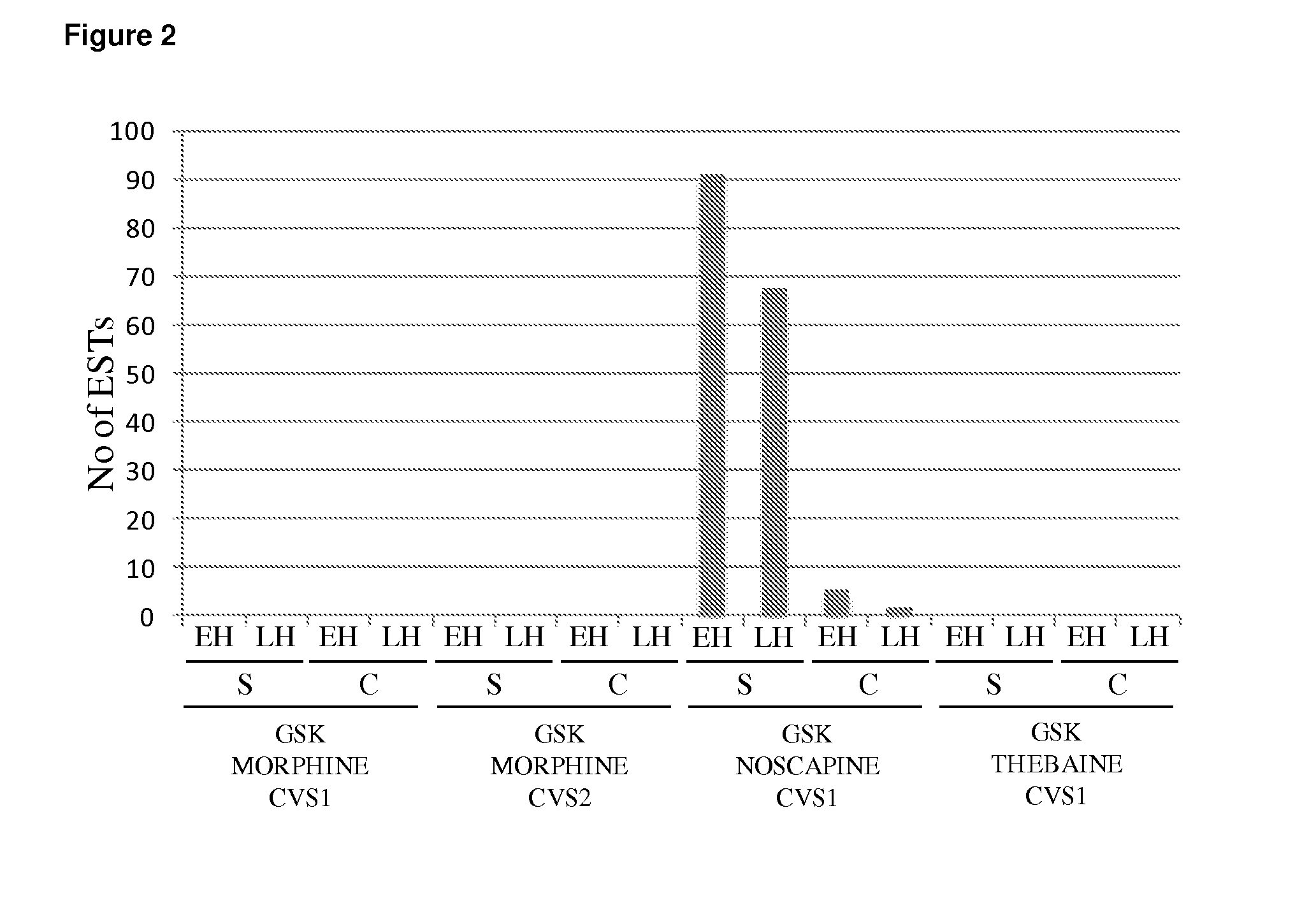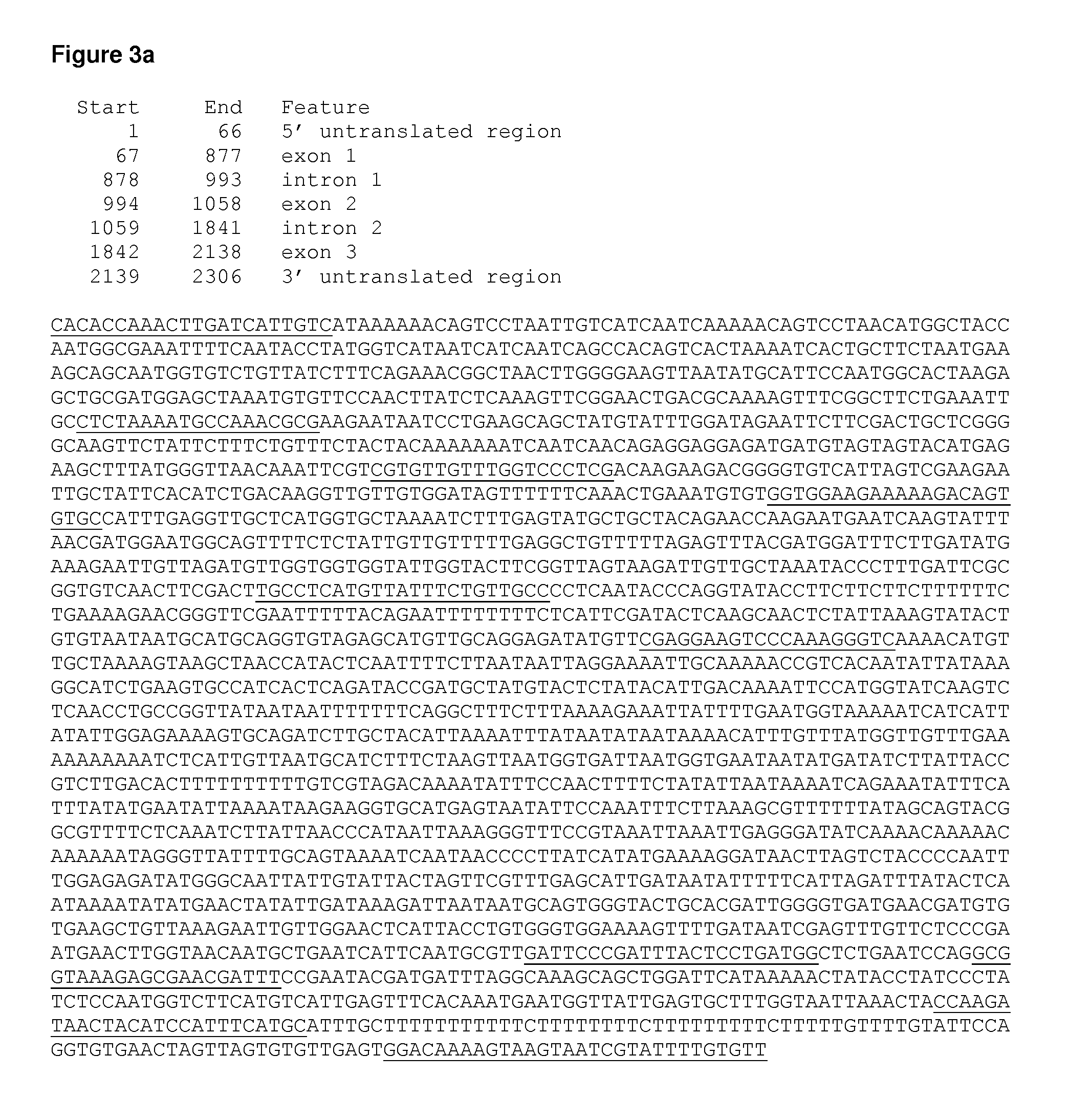Methyltransferase nucleic acids and polypeptides
a technology of methyltransferase and nucleic acids, applied in the direction of transferases, peptide sources, enzymology, etc., can solve the problems of limited use of thebaine in the production of these compounds, and achieve the effect of maintaining the stability of plasmids
- Summary
- Abstract
- Description
- Claims
- Application Information
AI Technical Summary
Benefits of technology
Problems solved by technology
Method used
Image
Examples
example 2
[0207]PSMT1 is Exclusively Expressed in the Noscapine Producing Papaver somniferum Cultivar GSK NOSAPINE CVS1.
[0208]FIG. 2 shows the normalized distribution of ESTs associated with the PSMT1 consensus sequence across each of the 16 EST libraries prepared from two organs (capsules and stems) at two developmental stages (early and late harvest) from each of the four poppy cultivars, GSK MORHINE CVS1, GSK MORPHINE CVS2, GSK NOSAPINE CVS1 and GSK THEBAINE CVS1. ESTs corresponding to PsSOMT were exclusively found in libraries derived from the noscapine producing cultivar GSK NOSAPINE CVS1 (FIG. 2). PSMT1 expression was strongest in stem tissue shortly after flowering.
example 3
[0209]PCR-Amplification of PSMT1 from Genomic DNA of the Four Papaver somniferum Cultivars GSK NOSAPINE CVS1, GSK MORHINE CVS1, GSK MORPHINE CVS2 and GSK THEBAINE CVS1.
[0210]PCR-amplifications of PSMT1 fragments were performed on genomic DNA from the four poppy cultivars GSK NOSAPINE CVS1 (noscapine cultivar), GSK MORHINE CVS1 and GSK MORPHINE CVS2 (morphine cultivars) and GSK THEBAINE CVS1 (thebaine cultivar) using the primer combinations shown in Table 2 and 3.
FIG. 5 shows the PCR-amplification of PSMT1 from genomic DNA of the four Papaver somniferum cultivars GSK NOSAPINE CVS1, GSK MORHINE CVS1, GSK MORPHINE CVS2 and GSK THEBAINE CVS1.
[0211]The amplification from genomic DNA yielded the gene sequence shown in FIG. 3a.
example 4
[0212]The Putative Protein Encoded by PSMT1 Shows Highest Sequence Similarity to (S)-scoulerine 9-O-methyltransferases from Coptis japonica and Thalictrum flavum
[0213]The closest homologues to the putative protein encoded by the PSMT1 open reading frame (FIG. 4) are (S)-scoulerine 9-O-methyltransferases from Coptis japonica (Accession: Q39522.1, Evalue: 1e-120, 61% identical) and from Thalictrum flavum (Accession: AAU20770.1, Evalue: 5e-118 59% identical).
PUM
| Property | Measurement | Unit |
|---|---|---|
| Temperature | aaaaa | aaaaa |
| Temperature | aaaaa | aaaaa |
| Temperature | aaaaa | aaaaa |
Abstract
Description
Claims
Application Information
 Login to View More
Login to View More - R&D
- Intellectual Property
- Life Sciences
- Materials
- Tech Scout
- Unparalleled Data Quality
- Higher Quality Content
- 60% Fewer Hallucinations
Browse by: Latest US Patents, China's latest patents, Technical Efficacy Thesaurus, Application Domain, Technology Topic, Popular Technical Reports.
© 2025 PatSnap. All rights reserved.Legal|Privacy policy|Modern Slavery Act Transparency Statement|Sitemap|About US| Contact US: help@patsnap.com



